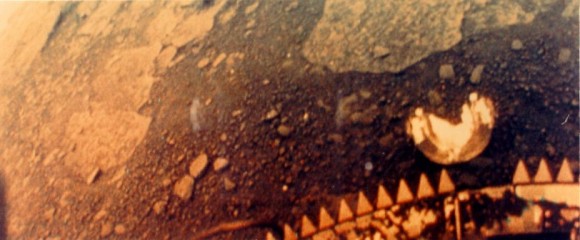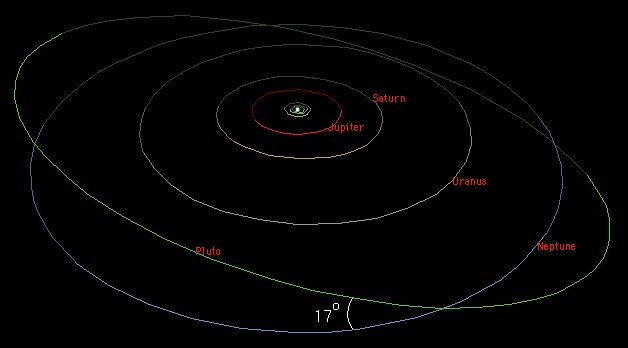Here’s a question: what color is Venus? With the unaided eye, Venus just looks like a very bright star in the sky. But spacecraft have sent back images of the cloud tops of Venus, and some have even returned images from the surface of Venus.
If you could actually fly out to Venus and look at it with your own eyes, you wouldn’t see much more than a bright white-yellowish ball with no features. You wouldn’t actually be able to see any of the cloud features that you can see in photographs of Venus. That’s because those photos are taken using different wavelengths of light, where differences in the cloud layers are visible. For example, the photo that accompanies this story was captured in the ultraviolet spectrum.
Although the atmosphere of Venus is almost entirely made up of carbon dioxide, the clouds that obscure our view to the surface are made of sulfur dioxide. These are opaque to visible light, and so we can’t see through them to the surface of Venus. These clouds actually rain droplets of sulfuric acid.

If you could get down beneath the cloud tops of Venus, you wouldn’t be able to see much either. That’s because the clouds are so thick that most of the light from the Sun is blocked before it reaches the surface. You would see a dim landscape, like you might see at twilight. The surface of the planet is littered with brownish-red volcanic rocks. The bright red color you see in the Soviet Venera images of Venus have been brightened to show more surface detail.
So, what color is Venus? Yellowish-white.
We’ve written several articles about the color of the planets for Universe Today. Here’s an article about the color of Mercury, and here’s an article about the color of Pluto.
If you’d like more info on Venus, check out Hubblesite’s News Releases about Venus, and here’s a link to NASA’s Solar System Exploration Guide on Venus.
We’ve also recorded an entire episode of Astronomy Cast all about Venus. Listen here, Episode 50: Venus.








